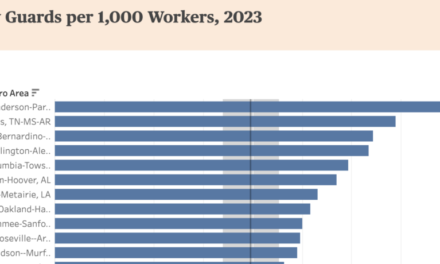From citiwire.net:
Is there such a thing as a “right business climate” to draw offices, industries, jobs – and in their wake, prosperity – to a state?
Judging by the number of organizations that add up and then score and compare taxes, regulations and labor costs for each of the states, one would have to think so.
These studies seem to measure anything purportedly relevant – levels of business and personal taxes, minimum wage levels, tight or loose safety and environmental rules, labor costs, “right-to-work” statutes, inheritance taxes. Then they add still more to create their dizzying areas of weightings to then rank and compare the 50 states.
The consumers are intended to be either state legislatures, as they decide how to shift their taxes and regulations to promote more economic activity, or corporations already on the hunt for sites to base their operations.
Highly skeptical of the whole array of studies, the Washington-based Good Jobs First organization has just published “Grading Places” – a look at the rating industry.
“If there’s one thing people need to take away from our study,” says Greg LeRoy, executive director of Good Jobs First, “is that there’s no such thing as a state business climate. Businesses’ needs for various kinds of services and facilities vary too much.”
Plus, LeRoy adds, states aren’t the important entity that businesses should be looking at anyway. The real theater of action is the metro area. Metro areas in a state differ, he notes, and sometimes differ dramatically – in local property tax levels, in skilled labor, quality of infrastructure, schools and colleges, transportation linkages, and proximity to customers and suppliers. Tally those real-world conditions, he suggests, and one sees more of the truly significant factors that qualified site-selection experts advising companies actually look for, but which the raw state rankings mix.
But the big rating game focuses exclusively on states. And almost all the organizations whose rating systems are evaluated in “Grading Places” have a “clear agenda” driving them, asserts Peter Fisher, lead author of the report and research director of the Iowa Policy Project. It’s an agenda that too often can be boiled down, he contends, to “tax avoidance and wage suppression.”
Plus, Fisher insists, all the studies have major technical faults. The Small Business and Entrepreneurship Council, for example, has a scale that gives states better scores for such features as low progressive tax rates, no state minimum wage, absence of family leave, fewer government employees, less government spending and no renewable energy mandates.
But as Fisher notes, the same scoring omits (and clearly fails to value) what’s likely to matter a lot more – the quality of public school and university programs, state investment in infrastructure, business incubators or entrepreneurship programs at public universities and state venture capital funding.
Another major rating system that Good Jobs First takes on is the annual report, “Rich States, Poor States,” written by supply-side economist Arthur Laffer. It’s issued by ALEC, the American Legislative Exchange Council, which is supported by major corporations and such major right-wing players as Charles and David Koch. Laffer’s chosen index items all favor lower taxes on corporations and the wealthy, reduced public revenues, and holding down workers’ earning power by restraining minimum wages levels and weakening the bargaining power of unions.
But Fisher’s study checked the five-year performance of states by Laffer’s 2007 ranking and found, in terms of actual economic growth, no tendency for better-ranked states to do any better or worse than lower-ranked states.
Most widely cited in the group is the Tax Foundation’s State Business Climate Index, which combines 118 individual tax features. They’re merged into a single score in what Fisher terms a “completely arbitrary” way. Independent evaluations, he reports, show no discernible difference in the growth of state economies between those rated high or low by the Tax Foundation.
The bigger problem in the studies, beyond their blindness to metropolitan differences, does seem to be a significant tilt toward pared-down, low-cost, minimal state government – an incentive to states to reduce or even drop major tax systems. The direction seems perilous when states, still struggling to restore pre-recession spending levels, face escalating Medicaid obligations plus massive needs for enhanced systems ranging from transportation to K-12 and higher education.
LeRoy identifies a smarter direction – first, building tax systems that are fair to small as well as large businesses. And even more essential, building systems developed for societies that work for all groups, focused on “equity, innovation and resilience.”



